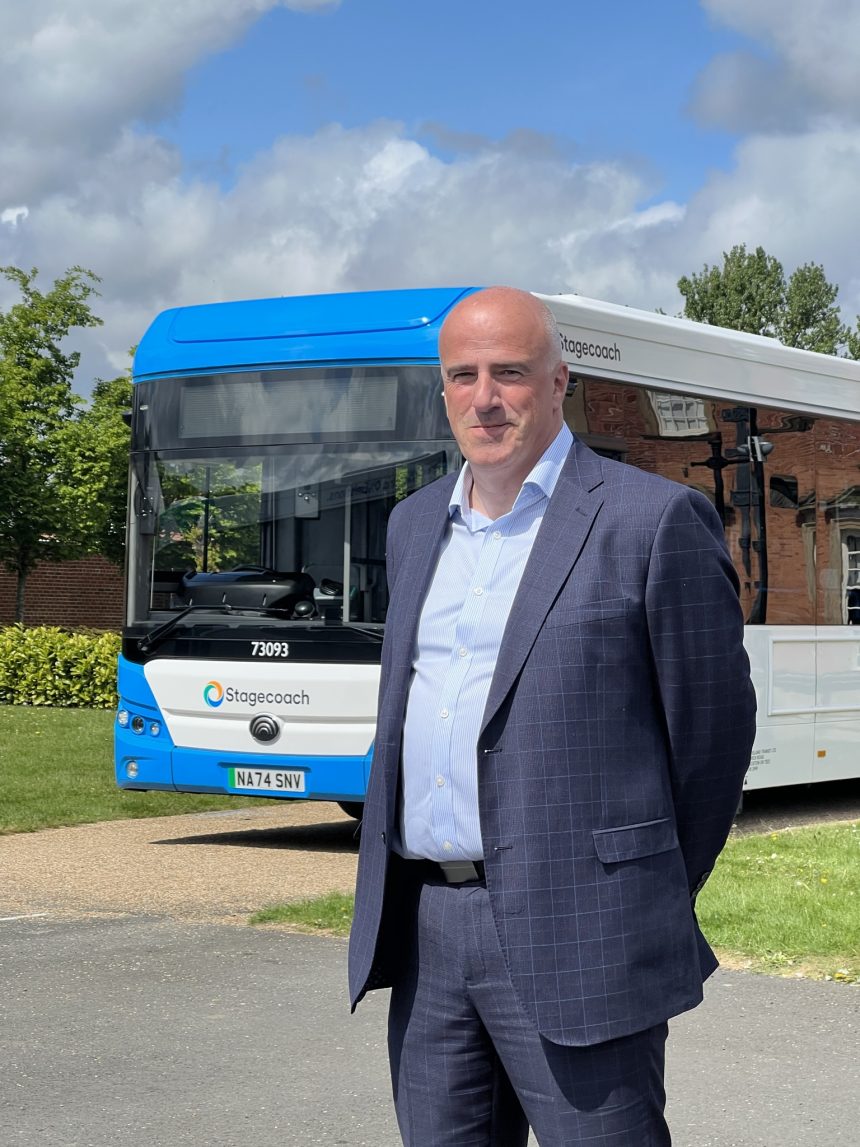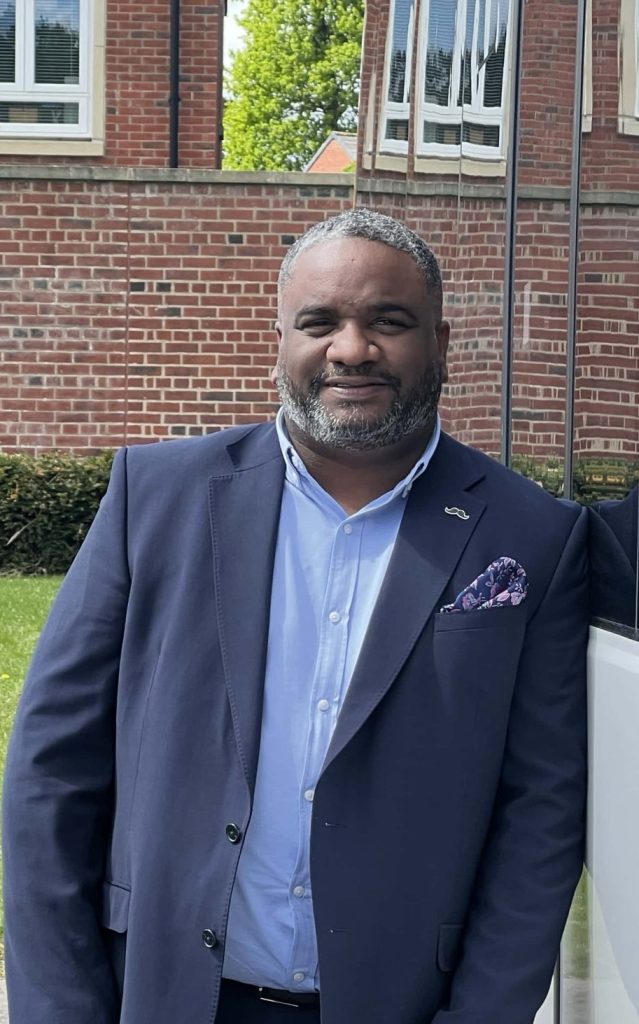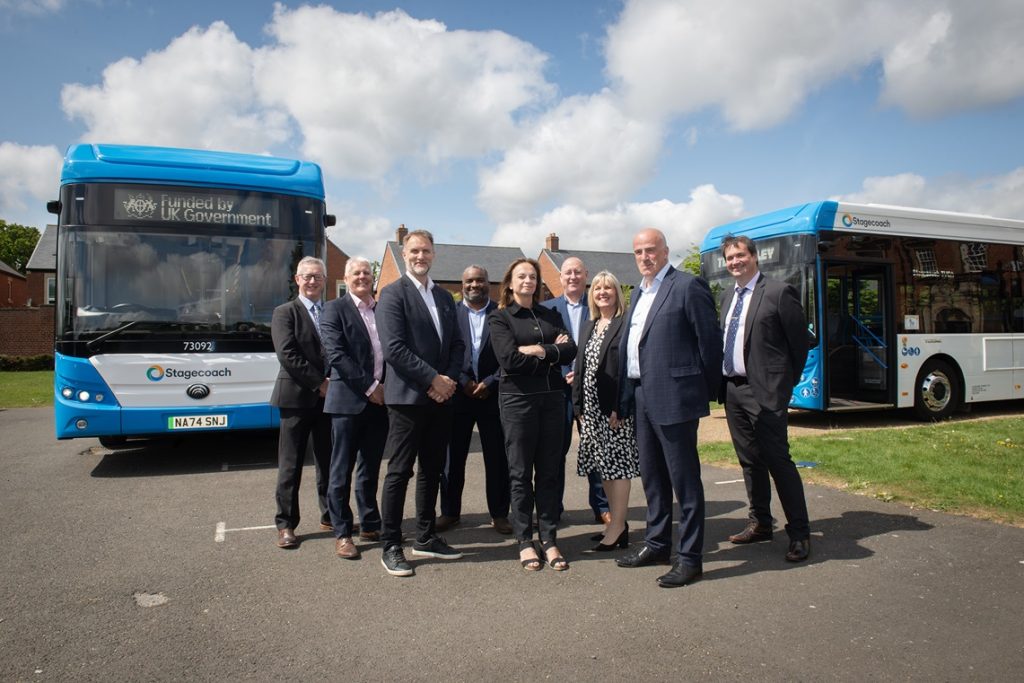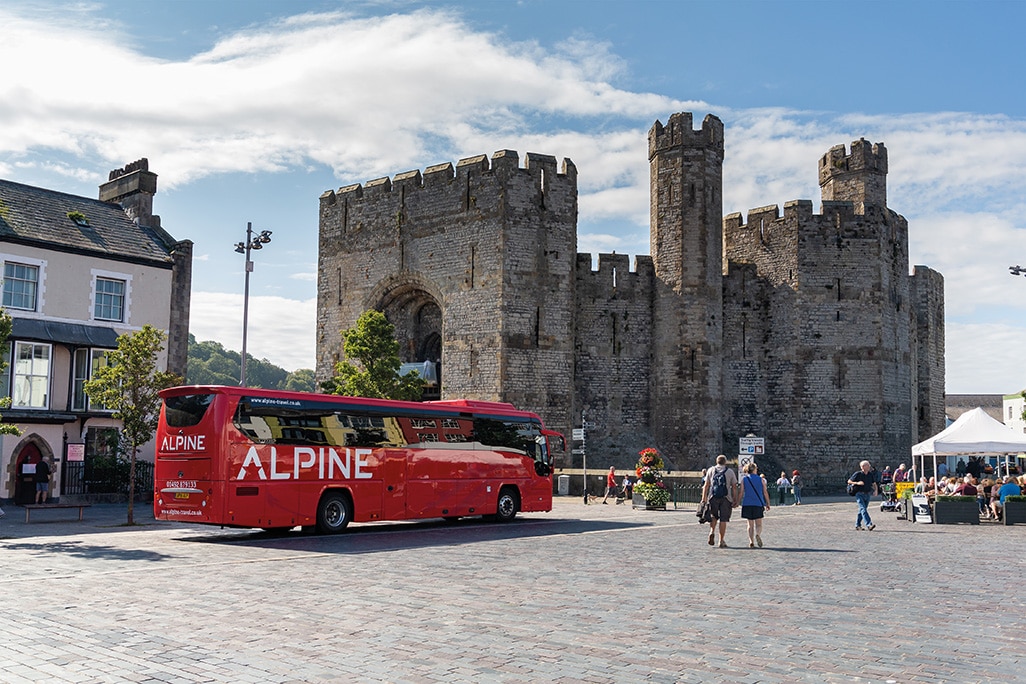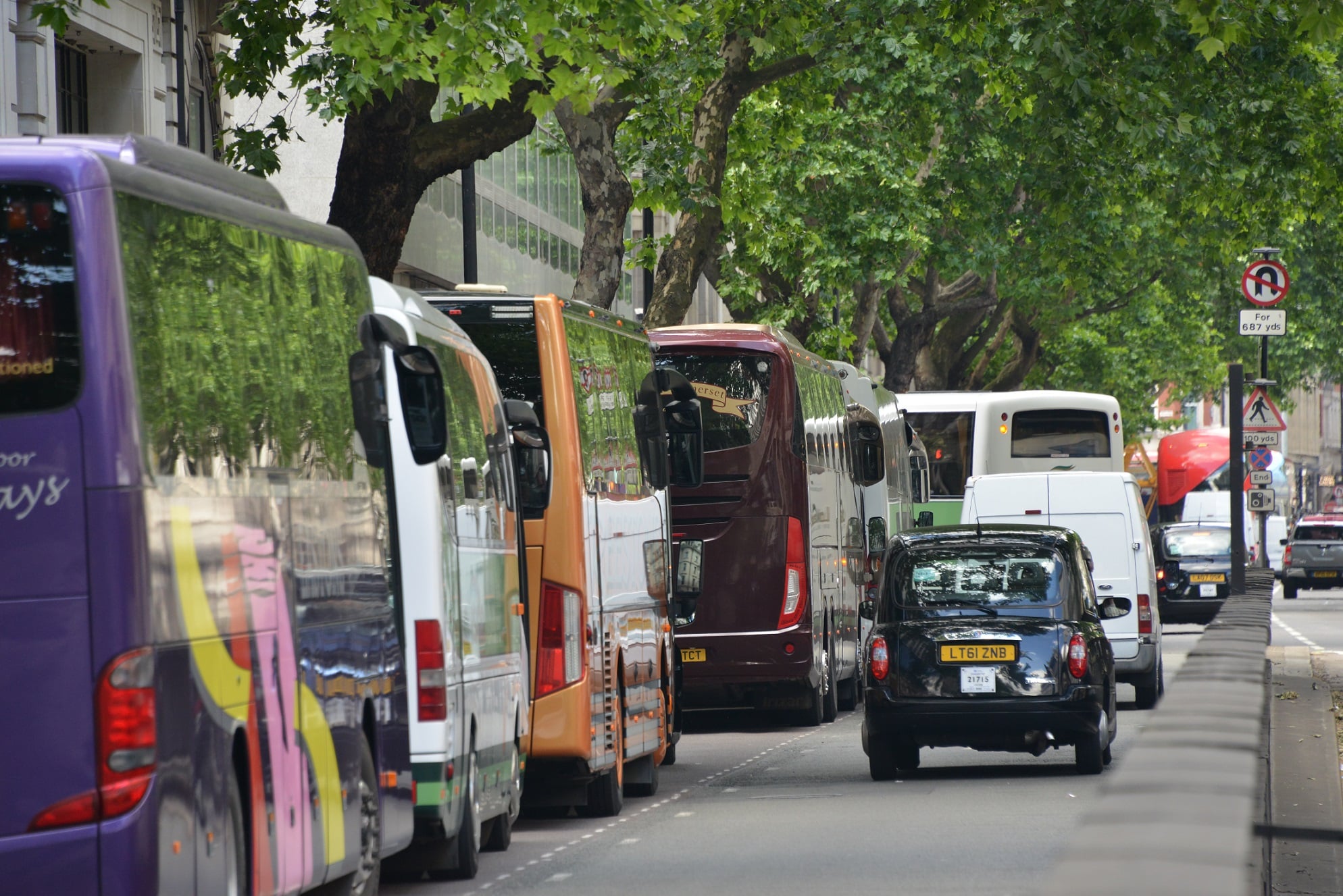Stagecoach North East has detailed plans for its first fully electric fleet and depot in Stockton-on-Tees. Believed to be the first of its kind and representing over £40 million of investment, it is being hailed as a “blueprint” for Stagecoach operations across the UK. That includes plans to monetise charging infrastructure to other commercial operators and expand community engagement.
Completion is anticipated to take 18 months and is part of Enhanced Partnership work with Tees Valley Combined Authority (TVCA). Part funding it is £3 million from the Zero Emission Bus Regional Areas (ZEBRA) scheme.
Revenue generator
The site will house 67 Yutong buses — 66 single-deck E12s and one U11DD double-deck — making up Stagecoach’s first fully zero-emission fleet. 58 are delivered, with others due between August and October. The company is awaiting final commissioning of the grid connection before a full switch over to zero-emission in six weeks’ time.
Off-peak hours will see business-to-business (B2B) charging introduced, which will allow other fleet operators to access charging points. Sectors being targeted include HGV, last-mile delivery, refuse collection, and blue light services.
Marvin Smith, Head of Solution Sales at Stagecoach Group (pictured below), says smaller B2B charging trials have been undertaken elsewhere, but Stockton represents the first large-scale test of its kind.
The B2B proposition will use scheduled slots, with individual applications approved by Stagecoach. That will avoid clashes, but Stagecoach is also intentionally avoiding a business-to-consumer (B2C) model for now, citing ease of induction, safety, reliability, and space.
“It will not be a free-for-all,” Mr Smith explains. “Through B2B, we want not only to work with our partners and our stakeholders, but ultimately, to keep the country moving. There is a real shortage of power and infrastructure. This is an asset that is otherwise going to be underused; there is a solid span of time during the day when charging will be available. That is why we appeal to the B2B market.
“Culturally, having strangers in your depot, who are not from the bus world, is an alien concept. We must take the right steps. Safety will always be paramount, and if it doesn’t work, we can stop it. It won’t necessarily always be the case, but as we enter the market, it’s a measured approach.”
Replicable model
With over 10% of Stagecoach’s national fleet now fully electric, the Stockton pilot forms part of wider trials to inform future investments. The aim is to test and refine the B2B charging model before rollout more broadly.
Mr Smith says details of how it can be applied to other depots, alongside monetisation strategies, will come after those further trials. “We’re not looking at how it will be monetised in the latest phase. It’s not about charging in the way the B2C market does.
“Our offer is unique, with wide bays, large vehicles, clean infrastructure and no queuing. We’re using this time to get the proposition right. Right now, there is not enough evidence to prove this model would work at every location. We need to undertake further tests on multiple sites, and our next update will be on what we find from that.”
Steve Walker, Stagecoach North East Managing Director (pictured, top), hints at this forming a broader effort to diversify business beyond day-to-day bus operation, as well as offsetting the capital expenditure of electric vehicle (EV) infrastructure.
“Our footprint for Stockton is a lot bigger than we need, with us being able to install a community hub as well, but it is about looking at other options that are available to really diversify,” he says.
“Looking at B2B opportunity charging will reveal what extra we can get out of the infrastructure, to help cover the operating costs of EVs. They are more expensive than a diesel bus, and it is testing to see what can bring the cost of running them onto parity with other options.”
Community based
Stockton goes beyond fleet transformation and B2B charging; the planned dedicated community hub, a building separate to the depot, will include amenities such as retail units, private electric vehicle charging (forming B2C charging outside of the depot environment), and potential links to educational institutions, with the latter aimed at “ensuring the skills needed for the future are being embedded into the curriculum.”
Other plans with the new build include modern offices, breakout areas, training and recreation facilities, a focus on apprenticeship delivery, a rooftop garden for staff welfare, and sustainability through solar panels and wind turbines.
Engagement with the community has already begun; a competition run in conjunction with TVCA invited school children to design and name a zebra (a nod to the ZEBRA fund) for each bus — the unique identifiers are located behind the passenger doors.



















